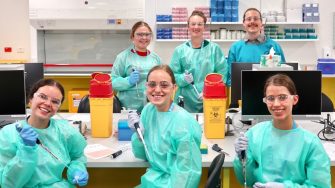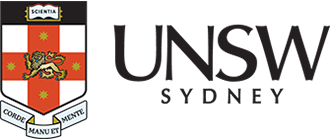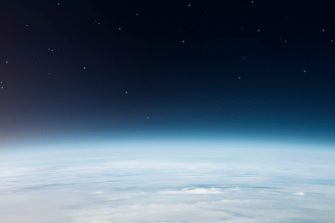
Bring the cosmos to your classroom — or bring your students to us
UNSW’s Astro Planetarium, run by the School of Physics, offers an immersive journey through the universe. Inside the dome, students explore the night sky, trace constellations, discover planets and galaxies, and the position of the Milky Way and its supermassive blackhole, Sagittarius A*.
You can choose an incursion, where we bring the planetarium to your school (within a set travel radius of 30 km from UNSW ), or an excursion, where students visit our Kensington campus to experience the planetarium on-site and interact with UNSW Physics students and staff.
Please note: The planetarium must be set up indoors — a gym or large hall is ideal.
Each session can be tailored to your group — students may learn about planets, stars, galaxies, or black holes. Let us know your preferred topic when booking
We’re happy to provide a quote and available dates upon request; please note, this is a not-for-profit initiative run at cost.
Approximate pricing: Each show lasts 30 minutes for a classroom of 20 students. The minimum number of students required to run an incursion is 60.
| Group numbers | Price per student |
|---|---|
| 60-80 students | $22 |
| 80-100 students | $17 |
| 100-120 students | $13 |
For smaller groups, we suggest visiting us to experience the planetarium at the university.
Book an excursion

Our school excursions for the experiments listed below are specifically designed to complement the Stage 6 Physics syllabus requirements for practical investigations or depth studies.
Excursions happen in the UNSW School of Physics first-year laboratories, where your students work in pairs to engage with physics equipment to collect and analyse data.
To facilitate their learning, we provide digital copies of worksheets and instructions, ensuring a seamless experience. Our demonstrators will be available to provide guidance and support throughout the excursion.
For excursions with two experiments in a day, we usually start at either 9AM or 10AM with the standard schedule as follows (for 10AM start shift back an hour):
- 9-11 AM – Lab experiment 1
- 11-11:30 Talk by a researcher
- 11:30-12 Break
- 12-2 PM - Lab experiment 2
- 2-2:30 School of Physics tour
The tour and talk are of no extra cost and the schedule is flexible to suit your needs.
The costs are $20 per student per lab session with a $240 minimum booking for one lab session or $400 for two lab sessions. If you are a Gateway school the cost is $10 per student per lab session with no minimum booking fee. Prices are subject to GST.
(For the list of Gateway schools click here)
Possible dates, subject to confirmed availability are weekdays: 1-30 May, 11 August – 8 September, 21-24 October, 24 November and later.
For bookings or more information: contact schools@phys.unsw.edu.au














